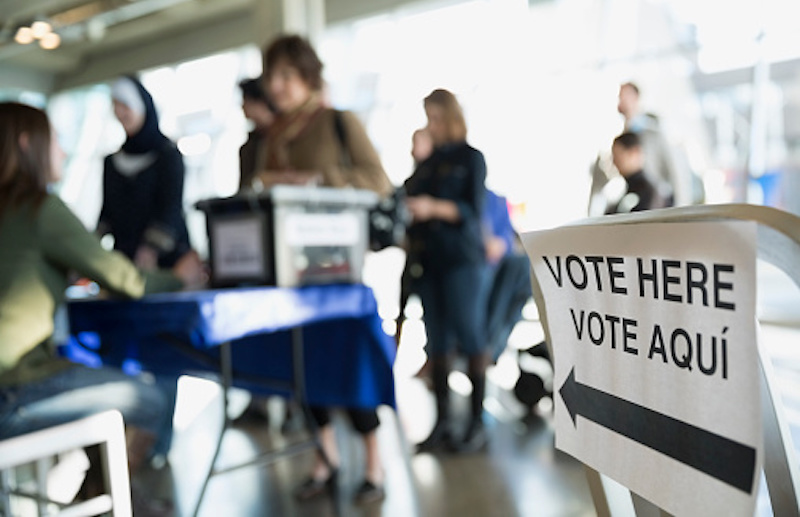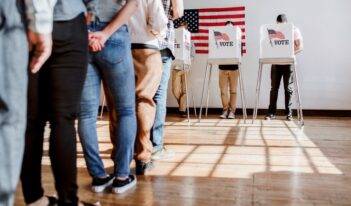
Research shows that requiring voter IDs imposes substantial costs, especially on disadvantaged groups.
Debates over voter identification laws tend to focus on two impacts of such laws. The first is whether requiring a voter ID deters voter fraud. The second is whether the existence of such a requirement deters legitimate voters from casting ballots in elections.
But there is a third impact that has received less attention: the cost of obtaining an ID. Individuals bearing these costs are disproportionately likely to be either young or old or impoverished or both, since these are the people least likely to have a driver’s license that could satisfy the law.
In a recent paper, we used two techniques that have never been used before in debates over voter ID to assess the costs of a particular voter ID law in North Carolina. The first technique takes advantage of burden estimates that federal agencies have made under the Paperwork Reduction Act. Whenever agencies wish to collect information from 10 or more people, they must estimate the burden of that collection. Numerous federal collections approximate the requirement of getting an ID—passports, social security cards, and other documents—and hence their approvals have required estimates of the burden of obtaining such IDs.
The second technique we used was simply a mapping tool called ArcGIS, which allowed us to calculate average distances between people’s homes and the nearest place for them to secure an ID. We did this to obtain average travel times across the state of North Carolina and also to look more closely at three counties in particular—Wake, Randolph, and Swain Counties.
North Carolina first passed a voter ID law in 2013. It was one of the strictest in the nation. We were asked to assess the burden of this law as part of a lawsuit seeking to overturn the law, and our estimates are based on the earliest version of the North Carolina voter ID requirement. A federal appeals court struck down the requirement in 2016. This year, however, in a referendum, North Carolina voters approved a requirement that the voters show ID at the polls.
The burden of getting the required identification to vote can be broken into three categories: the time to gather the necessary supporting documentation; the time to drive or walk to the nearest DMV office (this may be a burden for the person seeking the ID and a person to drive them); and the wait time at the DMV. To convert these durations into a monetary estimate, we multiplied the sum of these times by an estimate of both the minimum wage and the living wage in North Carolina.
Seventy of North Carolina’s 100 counties have only one DMV office and 10 of those have only mobile units making occasional visits. Five counties have no DMV office. As a result, costs to voters vary widely by location. In Wake County, with multiple DMV locations and more robust public transportation, we calculated median drive times at under five minutes. In suburban Randolph County—with just one DMV location, that median time more than doubled. Rural voters, whose counties have fewer or no DMV locations, minimal or non-existent public transportation, and higher proportions of voters without ID, will bear the highest costs associated with photo ID.
Our calculations for the time to gather documents, get to a DMV, and wait at the DMV, when multiplied by the estimated 400,000 voters lacking the requisite ID under the previous law, put the total time burden for gathering documents and travel time in a range that at its upper end was nearly one million hours. In total, we calculated the range of the economic burden on North Carolina citizens without ID at $4.8 to $7.2 million using the minimum wage—and as high as $9 million using the still modest living wage. We then added estimates of the cost to the state of administering a voter ID requirement, which brought the total cost of the requirement to a range of $13.4 to $17.2 million.
If this estimate is extended on a per capita basis across the country, then we can say that if every state imposed a strict voter ID requirement like the one in North Carolina, the total cost would be between $426 and $548 million. And this cost would disproportionately be borne by the most vulnerable members of society.
Of course, not everyone who lacks an ID will get one. Indeed, due to the costs, some of those individuals will be deterred from voting. The deterrence of legal voters from voting in elections is a distinct cost that is imposed upon all of us by the weakening of our democratic system. In that sense, the cost of actually getting a voter ID is a minimal estimate of the cost of voter ID laws because it does not include the broader social costs.
The other aspect of voter ID laws that is commonly debated—the prevention of voter fraud—is the purported benefit of such requirements. But studies have repeatedly documented that such fraud is rare. One cannot help but conclude that in passing voter ID laws, we are imposing millions of dollars in costs on those who can least afford them, and thus are damaging democracy, all in search of a benefit that is at best extremely questionable.
This essay draws on Shapiro’s recent article, entitled The Burden of Voter Identification Laws: The Case of North Carolina, which appeared in the Thurgood Marshall Law Review.





